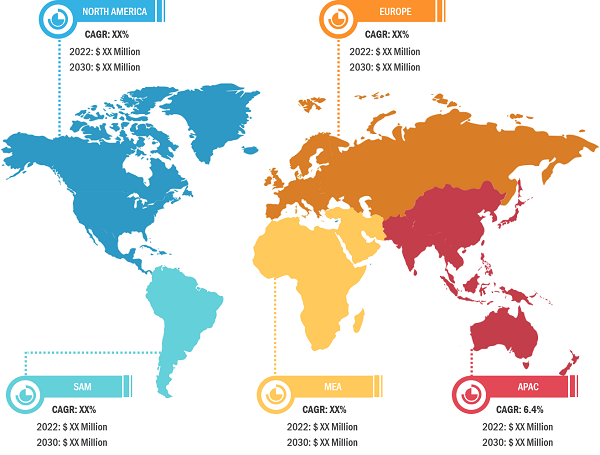Growing Adoption of Smart Home Technologies Boosts Underfloor Heating Market Growth
According to our latest study on “Underfloor Heating Market Forecast to 2030 – Market Size and Forecasts (2020–2030), Global and Regional Share, Trends, and Growth Opportunity Analysis Report Coverage – by Type, Installation, and Application,” the underfloor heating market size was valued at US$ 3.90 billion in 2022 and is expected to reach US$ 6.95 billion by 2030. The Underfloor Heating market is expected to record a CAGR of 7.5% from 2022 to 2030.
According to the National Policy Roadmap for Home Automation Technologies, the buildings sector (residential and commercial) accounted for 32.6% of total electricity consumption as of 2021 in India. This has encouraged the Indian government to emphasize home automation technology. The rising number of government initiatives is driving the adoption of smart homes. Moreover, according to the Australian Digital Transformation Agency, the government of Australia is applying a Digital Government Strategy (DGS) to emphasize digitalization in governance, home, and businesses. Digitalization and technical advancements in Australia are driving the adoption of smart technologies and smart homes. Smart homes can control underfloor heating systems, wiring, and others through voice commands or via smartphone. Several players in the region provide smart home room thermostat underfloor heating. For instance, the Bosch provides smart home room thermostat underfloor heating and allows all wired, water-carrying underfloor heating systems to be conveniently and easily controlled. The heating cycles can be set for each room separately, either directly on the device, intuitively via voice command, or via smartphone when the user is away from home. Thus, the smart home technologies system allows users to control their underfloor heating remotely from their smartphones or tablets. This allows for more precise control over heating schedules and temperatures, leading to increased comfort and energy efficiency. Growing adoption of smart home technologies and providers of smart thermostat underfloor heating are driving the growth of the underfloor heating market.
Underfloor Heating Market – By Region, 2022 and 2030
Underfloor Heating Market Size and Forecasts (2020 - 2030), Global and Regional Share, Trends, and Growth Opportunity Analysis Report Coverage: By Type (Hydronic System Components and Electric System Components); Installation (Retrofit and New), Application (Residential and Commercial)
Underfloor Heating Market Growth Report and Size by 2030
Download Free Sample
Source: The Insight Partners Analysis
Underfloor heating works by heating the floor and the objects on it radiate heat into the room. This creates an even consistent temperature, meaning less energy is required to keep the room warm. In fact, underfloor heating can be up to 25% more efficient than traditional heating systems, resulting in lower energy bills and an eco-friendlier home. Traditional radiators should be heated to a high temperature (between 65 and 75 degrees Celsius) in order to heat a room efficiently. In contrast, floor heating requires just a temperature of 29 degrees Celsius or less, depending on the floor finish, to warm the room. Lower temperatures use less energy and can help to save money on energy costs.
Water-based underfloor heating systems use low water temperatures and cost ~60% less to operate than electric systems. Rapid response systems can also be installed beneath the floor finish, providing optimum control and making them suitable for retrofit or newbuild projects. One big benefit of using a water-based underfloor heating system is that hydrogen, gas boiler, or heat pump, water-based underfloor heating will always remain the most energy-efficient solution, use the least energy, and will assist in saving money, and delivering comfort. Thus, the growing use of energy-efficient heating systems will most likely create opportunities for the underfloor heating market.
The underfloor heating market is categorized on the basis of type, installation, application, and geography. Based on type, the underfloor heating market is segmented into hydronic system components and electric system components. By installation, the underfloor heating market is segmented into new and retrofit. Based on application, the underfloor heating market is bifurcated into residential and commercial. The underfloor heating market, based on geography, is categorized into North America, Europe, Asia Pacific, and the Rest of World.
Danfoss, Emerson Electric Co., nVent, Uponor Corporation, REHAU Ltd., Resideo Technologies Inc., Watts, Schneider Electric, Robert Bosch GmbH, and Daikin are among the key players operating in the underfloor heating market.
Contact Us
Phone: +1-646-491-9876
Email Id: sales@theinsightpartners.com